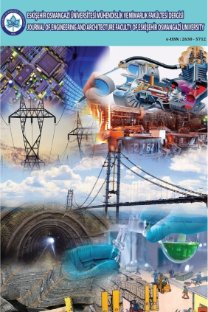Pirit mineralinin asidik ortamda Fe2(SO4)3 çözeltilerindeki çözünürlüğü üzerine ultrases enerjisinin etkisi
Ultrases enerjisi katı/sıvı reaksiyonların hızlarını etkilediği bilinmektedir. Bu çalışmada, Pirit mineralinin asidik ortamda $Fe_2(SO_4)_3$; çözeltilerindeki çözünürlüğü üzerine ultrases enerjisinin etkisi incelenmiştir. Denemelerde, tane boyutu ve çözelti konsantrasyonu sabit tutularak değişik sıcaklıklarda ultrases enerjisinin çözünme üzerine olan etkisi incelenmiş ve tüm denemeler ultrases enerjisi kullanılmadan tekrar edilerek sonuçlar karşılaştırılmıştır. Çalışma sonuçlarına göre; ultrases enerjisinin dönüşüm kesrini ultrases kullanılmadan yapılan denemelere göre ortalama olarak % 30 oranında artırdığı görülmüştür.
Effect of ultrasound on the dissolution of prite mines in acidic and Fe2(SO4)3 solutions
Ultrasound is known to enhance solid/liquid reactions. This paper deals -with the investigation of the effect of ultrasonic energy on the dissolution of Pyrite mines in acidic solution of $Fe_2(SO_4)_3$. At the experimental runs, the effect of ultrasound on the dissolution rate at various temperatures has been investigated, while keeping the particle size and solution concentration constant. The same experimental runs without using ultrasound have been repeated and the results -were compared. According to these results, it has been observed that the ultrasound increased approximately 30 % conversion fraction compared to the other experimental results without using ultrasound.
___
- [1]. Suslick, K.S., “Ultrasound: its physical, chemical and biological effects”, VCH, New York., 1988.
- [2]. Mason, T.J., “Chemistry with Ultrasound, Critical Reports in Applied chemistry”, Society for Chemical Industry, No 28., 1990.
- [3]. Mason, T.J. and Lorimer, P.J. , “Sonochemistry: theory, applications and uses of ultrasound in chemistry”, Ellis Horwood, 1989.
- [4]. Slaczka, A.St., “Effect of Ultrasound on Ammonium Leaching of Zinc from Galmei Ore”, Ultrasonisc, 53-55, 1986.
- [5]. Canovalov, E.G. and Germanovich, I.N., “The Ultrasonic Capillary Effect.” Dokl. Akad. Nauk. USSR, 6,8, 492-498, 1962.
- [6]. Orlov, A.I., “Improvement of the Leaching Process”, Izv. Vyssh. Uchebn. Zaved. Tsvern. Metall.,1,85, 1975.
- [7]. Khavskii, N.N., Chizhikov, M.N., Novitskii, B.G., Fridman, V.M. and Yu, R., “Use of Joint Action of Ultrasonic and Electric Field to Improve Leaching of Metals”, Sb. Mosk.Inst. Stalii Spavov, 77, 94, 1977.
- [8]. Swamy, K.M., Sukla, L.B., Narayana, K.L., Kar, R.N. and Panchanadikar, V.V., “Use of Ultrasound in Microbial Leaching of Nickel from Laterites”, Ultrasonics Sonochemistry, 2, 5-9, 1995.
- [9]. Tekin, T., Tekin, D. and Bayramoğlu, M., “ Effect of ultrasound on the dissolution kinetics of phosphate rock in HNO3”, Ultrasonics Sonochemistry, 8, 3373-377, 2001.
- [10].Bayrakçeken, S., Yaşar, Y. and Çolak, S., “Kinetics of chlorination of pyrite in aqueous suspension”, Hydrometallurgy, 25,27-36, 1990
- [11].Kadioğlu, Y., Bayrakçeken, S. and Karaca, S., “Pirit mineralinin nitrik asit çözeltilerindeki yükseltgenme kinetiği“ IX. Kimya ve Kimya Müh. Sempozyumu Bildiri özeti Kitabı, 514-515, 1993.
- [12].Antonijevic, M. M., Dimitrijevic, M. and Jankovic, Z., “Investigation of pyrite oxidation by potassium dichromate”, Hydrometallurgy,32, 61-72,1993
- [13]. Furman, N.H., 1963, Standart Methods of Chemical Analysis. Van Nostrand Comp. Inc., New York (six. ed.)
- [14]. Mason, T.J. and Lorimer, P.J., “Sonochemistry: theory, applications and uses of ultrasound in chemistry”, Ellis Horwood, 1989.
- ISSN: 1301-045X
- Yayın Aralığı: Yılda 3 Sayı
- Başlangıç: 2018
